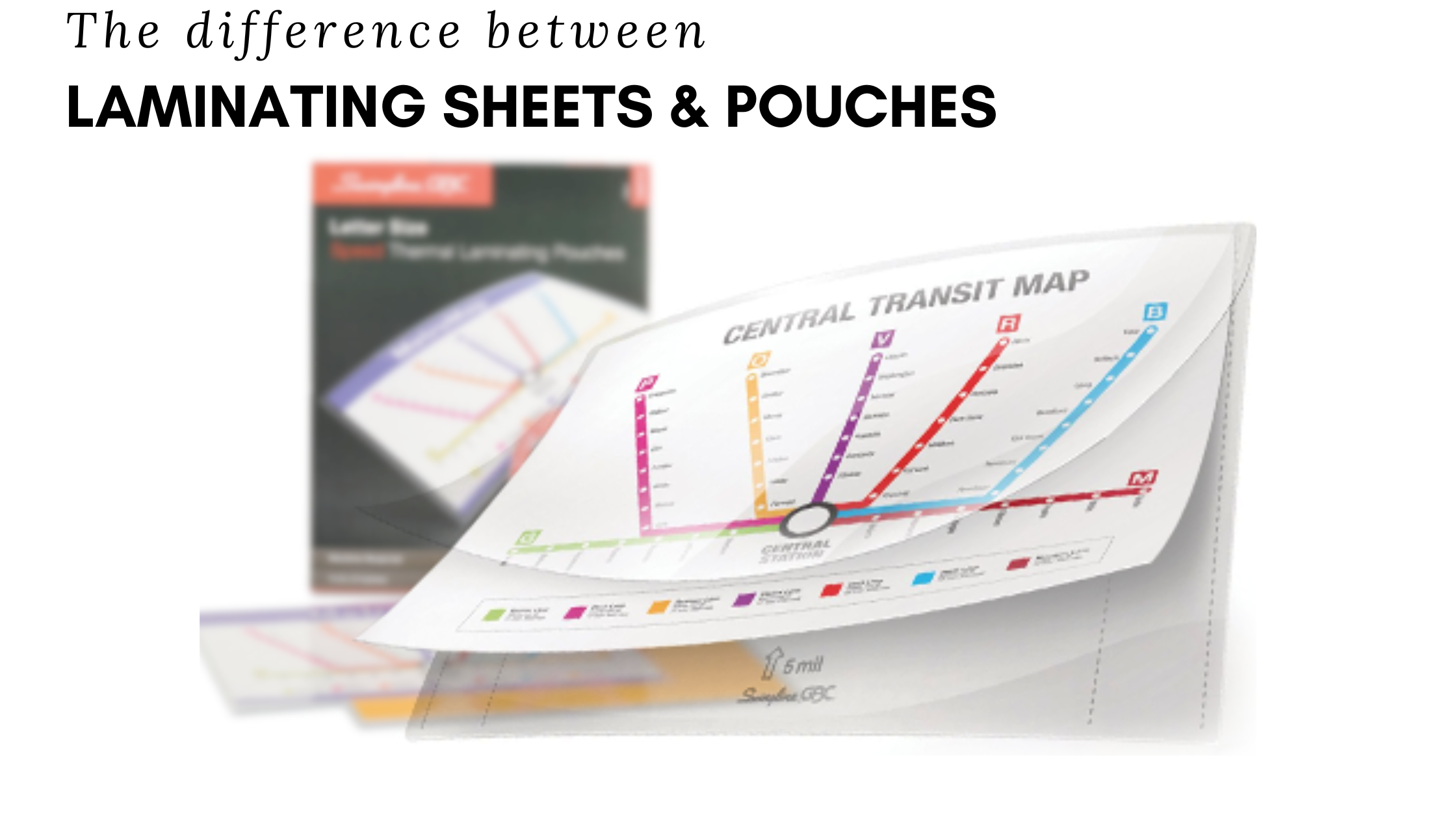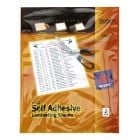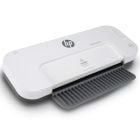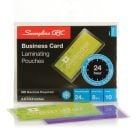Laminating Sheets vs. Pouches – What's the Difference?

There is a distinction between both a laminating pouch and a laminating sheet even though the phrases are frequently used interchangeably in the laminating industry. They both contain polyester and adhesive, however, lamination pouches often have a far higher ratio of polyester to adhesive than lamination film. Lamination pouches feel significantly stiffer as a result of this than laminated with roll film. This is the key basis for why roll laminating is less expensive than laminating pouches.
Laminating Pouches:
A "laminating pouch" is a laminate film piece with a pre-sealed edge making a pouch or sleeve. A laminating pouch, available as a cold pouch or thermal pouch, is used for two-sided laminating. The cold laminations can be produced without a machine or using a laminator that has a cold option. A heated pouch laminator is always required to seal thermal pouches.
Laminating pouches are ideal for providing all-around protection for a variety of documents, including ID cards, multipurpose papers, and images. Both the front and back sides of your page will be safeguarded because they totally enclose it. They also increase the document's rigidity and stability by two, which increases its durability and resistance to bends and tears.
TIP: Your laminator is too hot if your pouch comes out wavy. It is too low if it turns out milky. Accordingly, alter the speed or heat settings. You could use or skip a laminating pouch carrier to either shield your pouch from excessive heat or enable more heat to reach it if there are no heat or speed adjustments.
Laminating Sheets:
The typical laminating sheet size is made for papers up to Letter or A4 size. This means the sheet is somewhat bigger (9 x 11.5 inches) so that your document has an edge on either side. If there is too much extra plastic at the borders or if you are laminating anything smaller, you can trim the sides of the laminating sheet following centering and sealing your paper.
A single piece of laminate film that isn't sealed or joined to another sheet is referred to as a "laminating sheet" in simple terms. To laminate one side only, use a laminating sheet. Most of the time, they are self-stick, thus laminating your paper does not require heat or a machine. Rather, they merely apply pressure. You would peel off the paper lining covering the glue and stick it to your page.
For certificates, flyers, signage, schedules, and more, laminating sheets are ideal. Typically, there aren't many sizes available, but they can always be shrunk. They provide a little bit more stability for your pages than plain sheets, but not the full protection from spills and bending that a completely contained laminating pouch would provide.
Advice: Only peel off the corner of your line, then fold it back so that the adhesive is visible. Use the grid if the liner has one to align your page correctly with the bag before pressing it down to the exposed corner. While placing your page into the laminate sheet and smoothing it from the corner toward the edges, slowly peel off the liner. Either by hand or with a little roller are options.
Give us a call at 1-800-944-4573 if you have any questions, and we'll be happy to help you choose the best sort of lamination for your needs.









